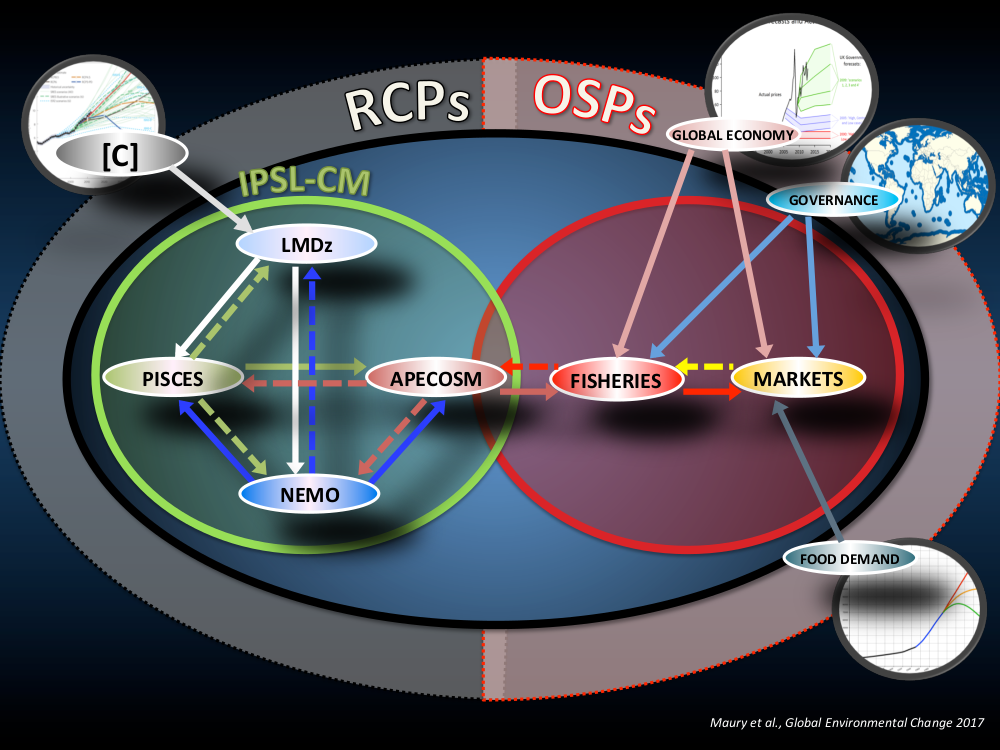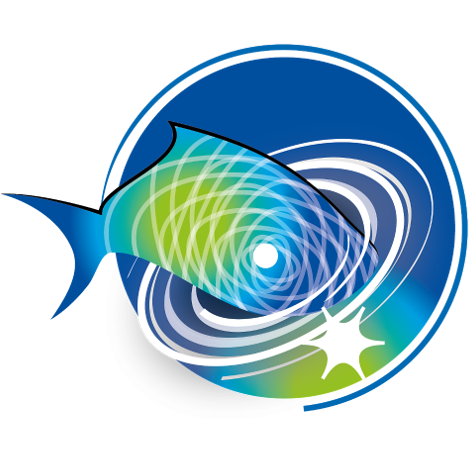About Apecosm
APECOSM model (Apex Predators ECOSystem Model) aims to represent the spatialized dynamics of open ocean pelagic ecosystems in the global ocean. Physical forcings (winds, temperature and currents from the OPA circulation model), biogeochemical forcings (primary production and oxygen from the PISCES biogeochemical model) as well as the effects of fishing are explicitely taken into account in the model. The model represents the energy flow through the Open Ocean Pelagic Ecosystem (OOPE) with a size-structured energy flux equation in 5 explicit dimensions (space, time, community and weight).
The epipelagic community is distinguished from the mesopelagic migratory community. The energy input at the basis of the OOPE comes from the PISCES biogeochemical model. The tuna species under interest (yellowfin, skipjack, bigeye, albacore) belongs to the OOPE (/i.e./: interact trophically with it) but have a finer structure. Tuna population dynamics are indeed represented with a DEB-based (Dynamic Energy Budget) physiologicaly structured advection-diffusion flux equation which transports individuals through a 6 dimensional space (space, time, reserves, structure, gonades).
Behaviour of fish is related to their physiological status. A sub-model enables to take into account the small-scale vertical movements of tunas into the larger scale ecosystem dynamics model and drives the interactions between tunas and OOPE.

